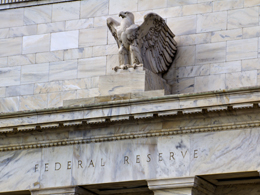 Will the Fed start to raise rates in September?
Will the Fed start to raise rates in September?
Economists and market watchers have been debating that question for months, concluding that September was a pretty safe bet. That got boring, though, so we took a couple of opportunities—the weak inflation report this week, the Chinese yuan devaluation, yesterday’s release of the July Fed minutes—to reopen the debate.
Now, the consensus seems to be that there’s less than a 50-percent chance of a September rate increase.
Basically, it all boils down to one question: how close is the economy to normal? By its charter, the Fed evaluates that through two lenses—employment and inflation. This dual mandate, as it’s called, guides both the Fed’s decision process and the analysis of people like me who try to second-guess it.
Employment looks good, but inflation too low
Historically, the Fed has defined normal as unemployment in the low 5-percent range and inflation of around 2 percent. When the economy deviates from those levels, the Fed’s policy is supposed to guide it back.
Per the Fed’s recent statements, employment is now closing in on normal. If we’re not there yet, we should be soon. The problem is inflation, which continues to be too low. The Fed’s decision to raise rates or wait depends on what inflation does in the next couple of months.
There are two flavors of low inflation:
- Low inflation is bad when it results from a lack of demand.
- Low inflation is good when it's due to technological progress that drives prices lower, even when demand is strong.
Right now, with employment growing steadily, the housing market normalizing, and consumer spending chugging along, there is no shortage of demand. Lower inflation is being driven by technological advances that have pushed the costs of energy, in particular, down sharply. Rather than harming the economy, this frees up cash for consumers to spend on other things, which can boost growth.
The Fed may wait on raising rates while one of its mandates is normal and the other is below normal—but for good reasons, not bad. Rates matter, but the change of a quarter percentage point, with the fundamentals strong, isn’t a big deal. Whether the first rate increase comes in September, December, or early next year, it simply won’t change how the economy evolves over the next several months.
Why I’m still betting on September
Personally, I believe the Fed remains likely to start raising rates in September, for a few reasons:
- In many respects, the economy has normalized, and postponing a rate increase would call that into question.
- There’s a real need to start reloading for when the economy does weaken again.
- The longer the Fed waits, the faster—and more damaging—subsequent rate rises will be.
I won’t be shocked if it does wait, though. With China weakening, a currency war brewing in emerging markets, and Europe still not out of the woods entirely, you could make a case for continued low rates. Based on a mix of economic and political considerations outside the U.S., a delay would be defensible, but considering there will always be some level of concern, it would also be a mistake.
That said, from a U.S. perspective, the economic recovery continues, and the ultimate timing of a rate increase simply doesn’t matter all that much.


 Print
Print


